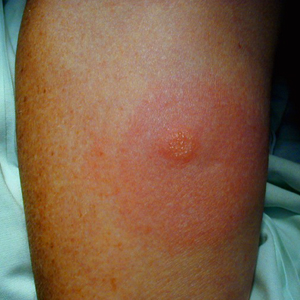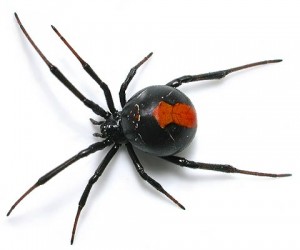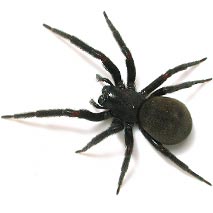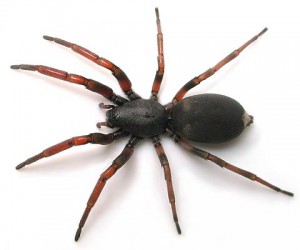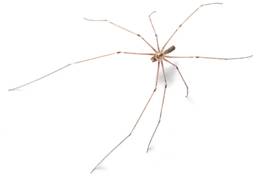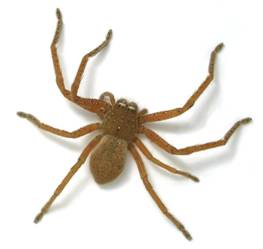Spiders
 Few creatures on the planet conjure up as much anxiety and fear as does the spider. A great deal of this fear is not justified but nonetheless it does exist and in many cases can manifest itself into an outright phobia (arachnophobia). A lot of this fear possibly stems from science fiction stories or Hollywood movies but in reality, spiders rarely cause harm to humans and in fact, their presence can be quite beneficial however understanding spider’s habits, and spider control, is essential around any home or business.
Few creatures on the planet conjure up as much anxiety and fear as does the spider. A great deal of this fear is not justified but nonetheless it does exist and in many cases can manifest itself into an outright phobia (arachnophobia). A lot of this fear possibly stems from science fiction stories or Hollywood movies but in reality, spiders rarely cause harm to humans and in fact, their presence can be quite beneficial however understanding spider’s habits, and spider control, is essential around any home or business.
Habits of Spiders
We’re all familiar with spiders. We see them, we see their webs and we’ve all had times when their sudden presence has caused the heart to race a little fast than normal when they crawl out from behind a cupboard or door. Putting the ‘fear factor’ aside, spiders do play an important role in our ecosystem:
- They help control insect numbers by catching and eating them. A good example of this and the benefits of spiders is in their consumption of mosquitoes thereby reducing the risk of the spreading of malaria.
- They in turn provide a food source for a wide variety of birds and lizards.
- The chemicals harvested from spider’s venom helps to control many diseases.
The habits of spiders can vary according to the species. Some spiders like warm, secluded, small places such as in cracks, air vents, cupboards etc. Others prefer an outdoor habitat and will spin their webs in your garden on the branches of plants and trees or under the eaves of a house and perhaps under the roof of a pergola. Other still may live in burrows underground but generally, if there is a plentiful supply of insects, one will find spiders.
Spiders tend to be more active in the Autumn months when they will enter your home not just to seek warmth during the winter, but also to seek a mate and lay eggs. During winter some spiders will die off but as the warmer weather arrives, they will disperse and the new population will become more active.
Spider eggs themselves are laid into a silken sac with each sac containing 50 – 100 eggs and these sacs can quite often be seen clustered and attached to a surface and are an indication of spider activity in that area.
Spiders generally tend to be non-aggressive towards humans and will retreat to cover when disturbed however if bitten by a spider, the resultant effect can vary from mild irritation to death and so, particularly if young children are present, it’s wise to have a spider control process in place.
Species of Spiders in Western Australia
In WA, there are numerous species of spiders however we will focus on a few varieties commonly seen around homes and businesses in our state.
Redback Spiders
- A very common spider that likes living in built up areas
- Seems to enjoy cohabiting with humans
- Reside in dry, dark areas such as under flower pots, roof eaves, shelves and garden sheds
- Male Redbacks are small and fangs cannot penetrate human skin
- Female Redbacks are the most dangerous and denoted by a black pea shaped body with a distinctive red / orange marking on her back
- Generally considered a timid spider that will only bite if attacked or disturbed
- The bite from a female can be painful immediately and the venom can work very slowly resulting in headache, vomiting, nausea, abdominal pain, fever, hypertension and in very sever cases,paralysis
- Redback bites are the most common source of spider bites in Australia, particularly over the summer months
Black House Spiders
- Dark brown to grey black in colour
- Common around homes where itspins its webs on windows, down pipes, gutters and window frames and even the external mirrors of the family car
- Webs tend to be messy and zigzag threaded with one or two funnel shaped entrances leading to a tubular retreat and this causes people to mistakenly think it is a Funnel Web spider
- A fairly timid spider whose bite can penetrate human skin but is generally not considered harmful and can cause localised pain
White Tailed Spider
- A very common spider seen right across Australia
- Approximately 12 – 18mm in length
- Don’t build webs but tend to be vagrant hunters and will eat other spiders
- Grey to black body with a cylindrical abdomen having a white patch at its tip
- Can be seen commonly inside homes residing on curtains, near furniture and even sitting brazenly on a wall. Cooler months may see them outdoors where they will reside under piles of wood and other areas around the home
- A White Tailed Spider’s bite can initially cause some localised pain followed by swelling and itchiness at the site. Sensational media reporting has probably given this spider a reputation it doesn’t deserve and quite often its bite can go undetected
Daddy Long Legs Spider
- Characterised by a small body (9mm long) with very long legs up to 50mm in length
- Spin a lose web in sheltered areas of garages, sheds and inside houses where they typically reside on ceilings upper walls in the corner of a room
- Their web is more of retreat for them and not designed to catch prey. They eat small insects such as flies and other spiders
- Their fangs cannot penetrate human skin and although their venom glands contain small amounts of poison, they are completely harmless to humans
Huntsman Spider
- Large hairy spider with a flattened body. Can grow up to 15cm across the body
- Grey brown in colour
- Rear legs are shorter than the front ones allowing them to scuttle sideways if necessary
- Can reside outdoors or indoors where it’s sudden appearance from behind a curtain or piece of furniture can cause consternation to humans
- An agile spider that doesn’t spin a web and have keen eyesight for hunting their prey of smaller insects
- A timid spider and one that will run away from humans
- Although they can bite human flesh, this bite is not dangerous and whilst it may cause a little short term localised pain, the Huntsman Spider is considered completely harmless to humans
Spider control on your premises
As has been previously mentioned, spiders in general are harmless to humans and animals yet their appearance can be traumatic and so a methodical, proven approach is needed in their control. At Perth Pest Control we have a long experience in spider control and the treatments we use are residual, water based, long lasting and lethal to spiders. As well, these treatments, once dry, are completely safe to humans and animals alike. Contact us to organise an inspection of your premises
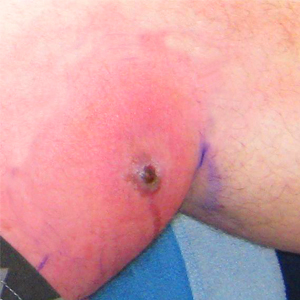
White Tailed Spider Bite
